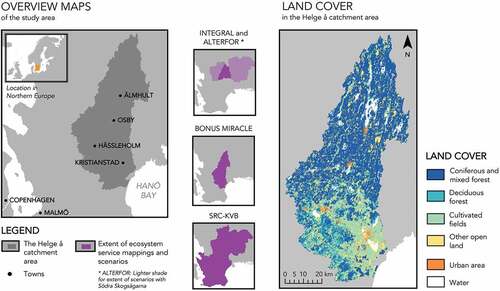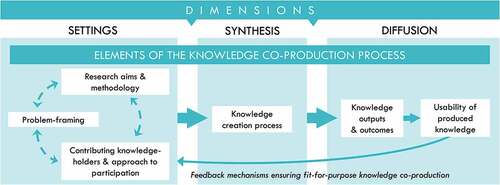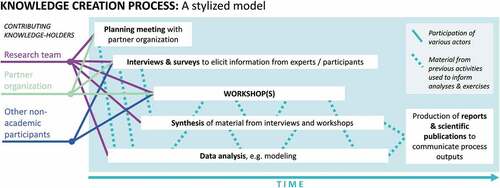Figures & data
Figure 1. Overview map, spatial extent of mappings and scenario analyses in the four projects, and land covers in the Helge å catchment area. Based on Fastighetskartan from © Lantmäteriet.

Table 1. Overview of the four futures-oriented research projects that were included in this comparative analysis.
Figure 2. Analytical framework for comparing knowledge co-production processes using Settings, Synthesis and Diffusion dimensions. Settings include the elements Research aims and methodologies, Contributing knowledge-holders and approach to participation and Problem-framing. This dimension corresponds with the Problem-framing and team building phase in Lang et al. (Citation2012). Synthesis consists of the element Knowledge creation process and corresponds with the Co-creation phase in Lang et al. (Citation2012) as well as the Inventory of synthesis (Defila and Di Giulio Citation2015). Diffusion consists of the elements Knowledge outputs and outcomes and Usability of produced knowledge, which corresponds with the (Re-)integration and application phase in Lang et al. (Citation2012).

Table 2. Interviewed key participants, including their affiliations and which projects they participated in.
Table 3. Research aims and methodologies of the four projects.
Table 4. Range of affiliations of participating actors.
Figure 3. Stylized model of a knowledge creation process and the different types of activities it may involve.

Table 5. Knowledge outputs that were produced, with an emphasis on those outputs that are comparable between the projects.
